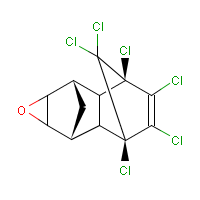It predated test rules; threat is unclear
A little-studied fire retardant has accumulated in Great Lakes sediment and game fish for decades without detection, according to new research.
The discovery about Dechlorane Plus, which went into production in 1964, surprised federal regulators.
"If this was a brand-new chemical, it would probably never get through" the testing process to allow its commercial use, Linda Birnbaum, a leading U.S. Environmental Protection Agency expert on toxic chemical effects, told the journal Environmental Science & Technology for a Jan. 4 article about the study.
But it is unclear what, if any, threat there is to human health or the environment from Dechlorane Plus, used for more than 40 years as a coating for electrical wires and computer cables. The chemical's only U.S. manufacturer, Occidental Chemical Corp. (OxyChem) says it is safe for people and other animals and has no plans to conduct testing on the product, which is manufactured at a plant in Niagara Falls, N.Y.
>>>>>>>>>>>>>>>>>>>>>>>>>>>>>>>
BrooklynDodger Comments: Persistent organic pollutants, moderate molecular weight chlorinated hydrocarbon compounds, are still the toughest risk assessment task. DDT and other organochlorine insecticides near wiped out raptor birds, before Silent Spring caught public attention. Dioxin appeared as the doomsday chemical. Gas chromatography with an electron capture detector is pretty sensitive for OC pesticides. Dioxin analyses require gas chromatography with high resolution mass spec.
The OC pesticides are relatively high dose toxicants in laboratory studies. Dioxin is exquisitely toxic in the lab. But human exposure and body burden is way low compared to the levels where health effects are directly observable in the lab.
 Well, back to dechlorane plus. The Dodger winkled a structure out of ChemID plus. Nothing but very high acute lethal doses in the data base. This looks like a material which would be very poorly absorbed in bolus doses. The LD50 results are even less informative because of no attempt to measure the tissue levels associated with lethality.
Well, back to dechlorane plus. The Dodger winkled a structure out of ChemID plus. Nothing but very high acute lethal doses in the data base. This looks like a material which would be very poorly absorbed in bolus doses. The LD50 results are even less informative because of no attempt to measure the tissue levels associated with lethality.
The bridged ring structure does evoke some pesticide analogues:
The Dodger is running out of
 commentarian gas here. The Dodger remembers dieldrin to be one of the really nasty OC pesticides, besides which DDT is pretty benign. It shares with declorane the 6 chlorinated bridged ring structure. Based on impression, you'd give this one a second look. Absorption after chronic exposure would be the exposure variable worth looking at, something a lot easier than a two year chronic bioassay.
commentarian gas here. The Dodger remembers dieldrin to be one of the really nasty OC pesticides, besides which DDT is pretty benign. It shares with declorane the 6 chlorinated bridged ring structure. Based on impression, you'd give this one a second look. Absorption after chronic exposure would be the exposure variable worth looking at, something a lot easier than a two year chronic bioassay.
No comments:
Post a Comment